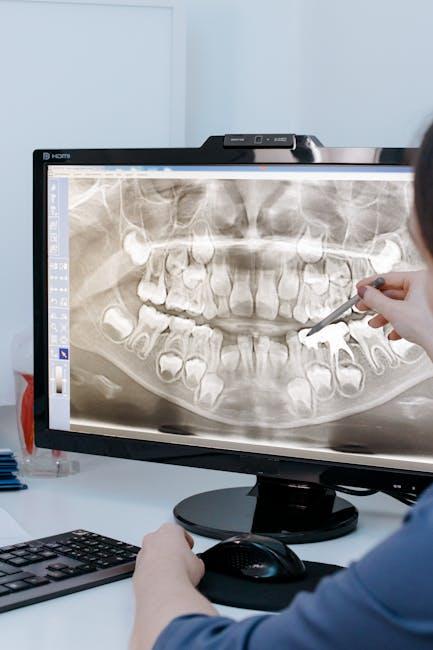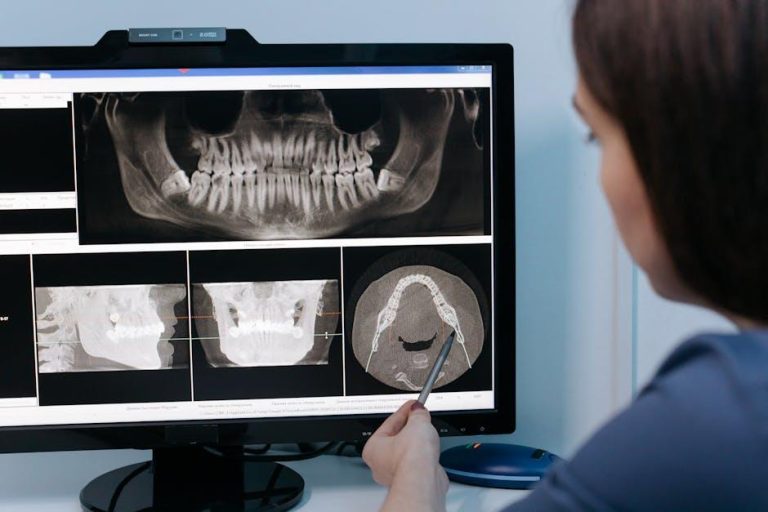
Dental News – Dental Imaging: Eight Revolutionary Trends to Shape the Coming Decade
Dental imaging has always been a cornerstone of modern dentistry, allowing clinicians to diagnose, plan, and deliver high-quality care. As technology rapidly advances, the landscape of dental imaging is evolving in unimaginable ways. The coming decade promises to bring revolutionary changes that will reshape diagnostics, treatment planning, and patient engagement — improving outcomes and practice efficiency. In this article, brought to you by Dental Tribune US, we explore eight groundbreaking trends in dental imaging that are poised to transform the profession.
1. Artificial Intelligence (AI) Integration in Dental Imaging
AI-powered tools are becoming increasingly sophisticated at analyzing dental images such as X-rays, CBCT scans, and intraoral photographs. These systems enhance diagnostic accuracy by detecting subtle signs of pathology and assisting in risk assessment. AI algorithms can automatically segment images, identify caries, periodontal bone loss, root fractures, and even predict treatment outcomes.
- Faster, more reliable diagnostics reduce human error and improve clinical decision-making.
- Automated report generation saves time and streamlines workflows.
- Predictive analytics enable early intervention and personalized patient care.
2. Advanced 3D Imaging and Cone Beam Computed Tomography (CBCT)
CBCT technology is rapidly becoming the standard for high-resolution, three-dimensional imaging in dental practice. Innovations are focusing on lower radiation doses, higher image clarity, and enhanced field-of-view options, facilitating more detailed diagnoses and surgical planning.
- Improved implant planning with precise anatomical visualization.
- Complex endodontic evaluation to detect hidden canals and fractures.
- Orthodontic assessments enhanced by 3D structural data.
3. Intraoral Scanners with Greater Accuracy and Speed
Intraoral scanning technology has risen above traditional impressions, offering patients a more comfortable experience and dentists a faster way to capture precise digital impressions. The next generation of scanners is becoming more compact, wireless, and capable of capturing color and texture alongside geometric data.
Benefits include:
- Reduced patient discomfort without messy impression materials.
- Real-time visualization facilitating better communication with patients.
- Enhanced integration with CAD/CAM systems for quicker prosthetic fabrication.
4. Integration of Augmented Reality (AR) and Mixed Reality (MR)
Cutting-edge AR and MR technologies overlay digital information onto real-world views during dental procedures. This can aid in guided implant surgeries, endodontic treatments, and orthodontic adjustments by projecting imaging data directly onto the patient or work area.
- Higher surgical precision through real-time guidance.
- Enhanced training tools for dental students and specialists.
- Improved patient understanding and consent when they see their own anatomy in 3D.
5. Low Dose and Radiation-Free Imaging Modalities
Patient safety has led to rising interest in imaging options that reduce or eliminate radiation exposure. Technologies such as ultrasound imaging for soft tissues and optical coherence tomography (OCT) for detailed intraoral scanning are gaining traction.
These alternatives are particularly useful in pediatrics and for patients requiring frequent imaging. They complement conventional radiographs and CBCT scans by providing additional diagnostic detail without added risk.
6. Cloud-Based Image Storage and AI-Powered Analytics Platforms
Dental practices are moving away from siloed storage to cloud-based platforms that enable easy access, sharing, and analysis of imaging data. Coupled with AI, these platforms facilitate a more collaborative approach to care, allowing specialists and general dentists to consult efficiently regardless of location.
| Feature | Benefit | Use Case |
|---|---|---|
| Cloud Storage | Instant access to patient images anywhere | Remote consultations |
| AI Analytics | Automated diagnostics & reporting | Better workflow efficiency |
| Data Security | HIPAA-compliant safeguarding | Patient privacy assurance |
7. Personalized and Predictive Imaging in Preventive Dentistry
Combining imaging data with patient-specific factors allows for personalized preventive strategies. Predictive imaging helps identify patients at higher risk for caries, periodontal diseases, and oral cancers before clinical signs become evident.
Examples include:
- Tracking enamel demineralization trends via fluorescence imaging.
- Visualizing early soft tissue changes through optical imaging.
- Customizing recall intervals based on risk profiles determined through comprehensive image analysis.
8. Miniaturization and Portability of Imaging Devices
Advancements in hardware technology are enabling the creation of smaller and more portable dental imaging devices. Handheld X-ray units and mobile intraoral scanners facilitate practice mobility and can extend imaging capabilities to community outreach efforts, mobile clinics, and home care environments.
- Increased access to diagnostic tools in underserved areas.
- Convenience for on-the-go dental professionals.
- Expandable telehealth opportunities combining imaging with virtual consultation.
Practical Tips for Dental Professionals Adopting New Imaging Technologies
- Stay Educated: Attend webinars, workshops, and courses focusing on new imaging techniques.
- Invest Wisely: Evaluate your practice needs before upgrading hardware—balance cost with functionality.
- Integrate Gradually: Introduce new technology step-by-step to ensure your team is comfortable and trained.
- Prioritize Patient Experience: Communicate changes clearly and show how innovations benefit them.
Conclusion
The future of dental imaging is bright, driven by remarkable advances in AI, 3D visualization, portable devices, and radiation-free methods. These eight revolutionary trends are setting the foundation for a decade where diagnostics become more precise, personalized, and patient-friendly. Dental professionals who embrace these innovations will elevate the standard of care and improve clinical outcomes dramatically.
Keep an eye on Dental Tribune US for more updates on how these exciting technologies continue to shape dentistry worldwide.


